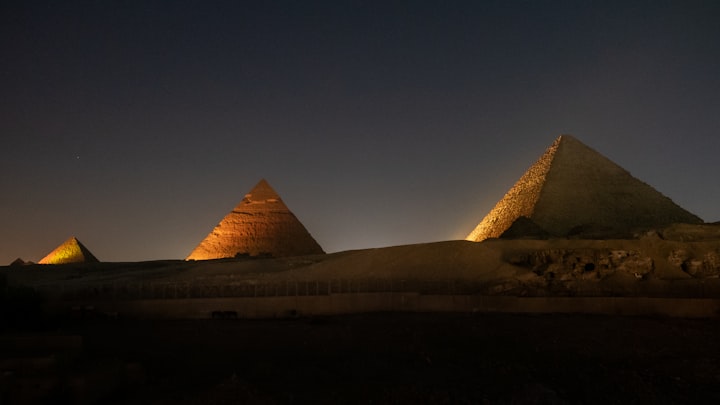One of the Seven Wonders of the Ancient World and a timeless representation of the engineering prowess of earlier civilizations, the Pyramids of Giza are situated on the outskirts of contemporary Cairo, Egypt. For decades, these magnificent buildings, which were constructed more than 4,500 years ago, have enthralled and inspired people, bringing millions of tourists each year to the plateau where they are located. The history, construction, and mystery of the Giza Pyramids will all be covered in this essay.
The Great Pyramid of Giza, the Khafre Pyramid, and the Menkaure Pyramid are the three principal components of the Giza pyramid complex. These buildings, which are more than simply ordinary tombs, are evidence of the ancient Egyptians' prowess in engineering and architecture. They were built throughout the Pharaohs' rule and served as their final resting place.
The largest and best-known of all the pyramids is the Great Pyramid of Giza, also called the Pyramid of Cheops. Pharaoh Cheops, who ruled Egypt from 2589 to 2566 BC, oversaw its construction. The Great Pyramid is a huge building that is 146.5 meters tall and over 13 acres in size. The construction of it is thought to have taken about 20 years and employed thousands of laborers and slaves.
The Pharaoh Khafre-inspired Khafre Pyramid can be found south of the Great Pyramid. Although slightly smaller in size at 136.4 meters, it is nevertheless a substantial building. The Sphinx, a huge figure of a lion with a human head that is situated close to the pyramid, and the pyramid itself are both known for their unusual profiles.
The smallest of the three pyramids is called the Menkaure Pyramid after Pharaoh Menkaure. It was built during the era of Pharaoh Menkaure, who governed Egypt from 2490 to 2472 BC, and is around 65 meters tall. The elaborately carved stone blocks and excellent preservation of the Menkaure Pyramid are well known.
An engineering and architectural combination was used to build the pyramids. The pyramids were built by the ancient Egyptians utilizing a special technique that involved laying out a level foundation and building the structure layer by layer while employing a system of ramps and pulleys to move the large stone blocks to the upper levels. The limestone used to build the pyramids was carried to the construction site using sledges, rollers, and ramps after being extracted from quarries in the neighborhood hills.
The pyramids' interiors were intended to serve as kings' tombs. The Pharaoh's body, along with gifts and offerings, was placed to rest in the main chamber of the pyramids, which was situated in the middle of the construction. Inscriptions and murals that portrayed scenes from Egyptian mythology and the Pharaoh's life were also used to embellish the graves.
The Giza pyramids have long been the subject of mystery and conjecture. Even though they were created as pharaohs' tombs, much is still unclear regarding their function and construction process. The pyramids may have served as astronomical observatories, places of worship, or even as landing pads for alien entities, according to a number of theories that have been put forth over the years.
Despite the many hypotheses, one of the most enduring questions about the pyramids is how the ancient Egyptians were able to move the enormous stone blocks that were used in their construction. According to certain calculations, the Great Pyramid alone needed the utilization of over 2.3 million stone blocks averaging 2.5 tons each. There is evidence that the ancient Egyptians employed ramps and pulleys to move the blocks into position; however, the precise manner by which they were transported is still unknown.






Comments
There are no comments for this story
Be the first to respond and start the conversation.